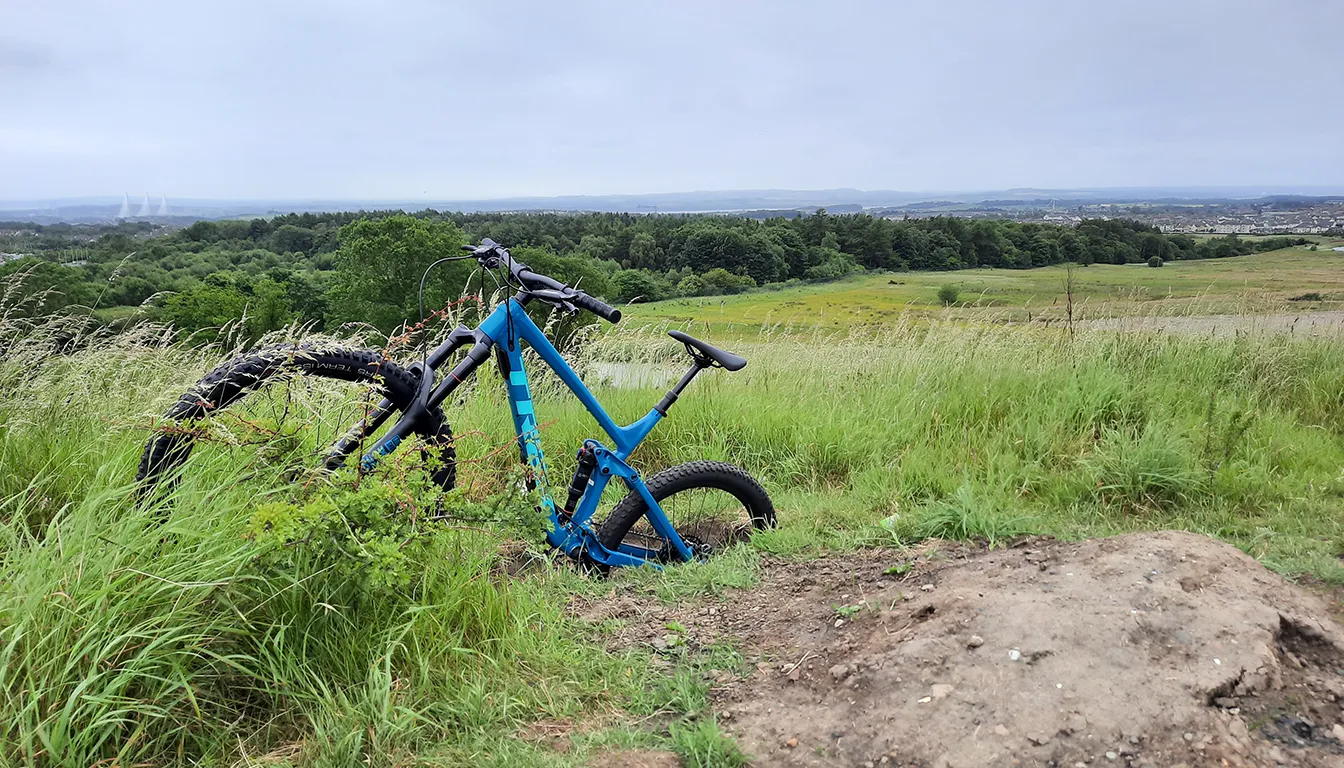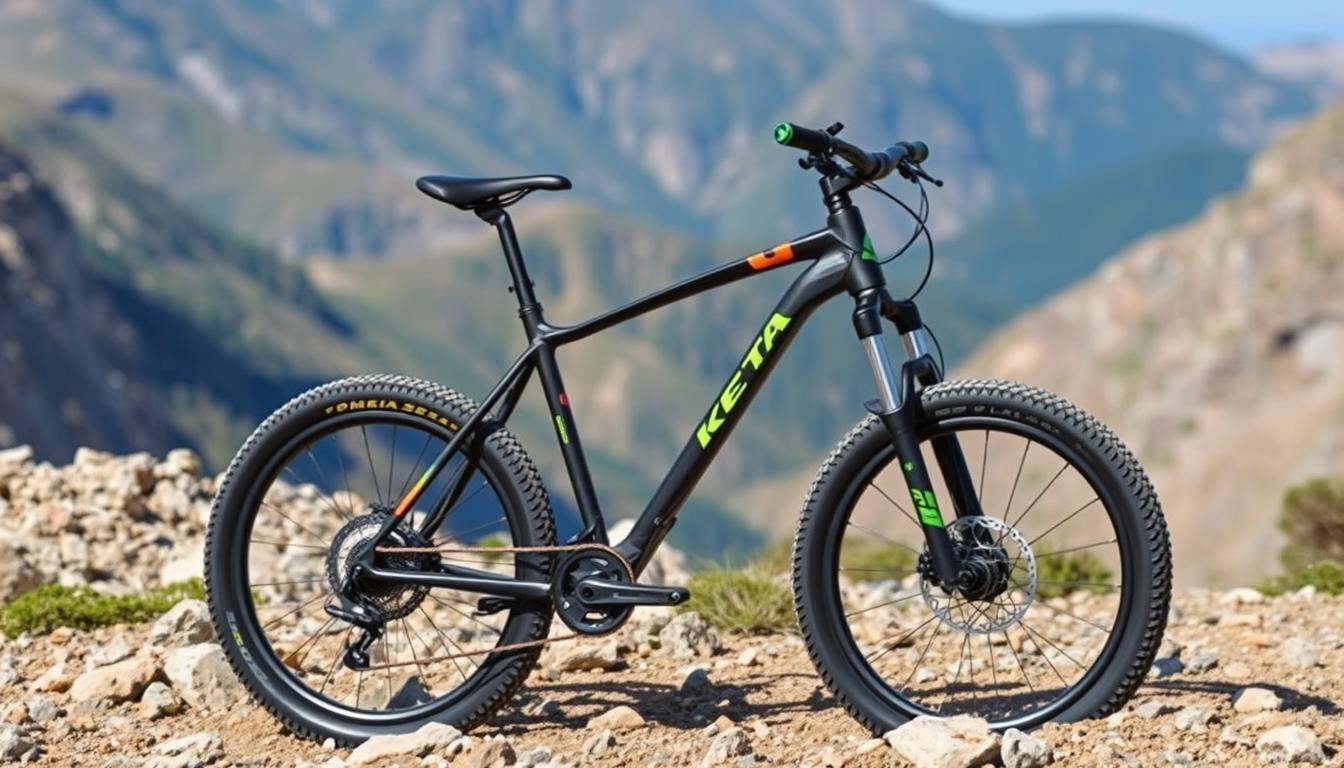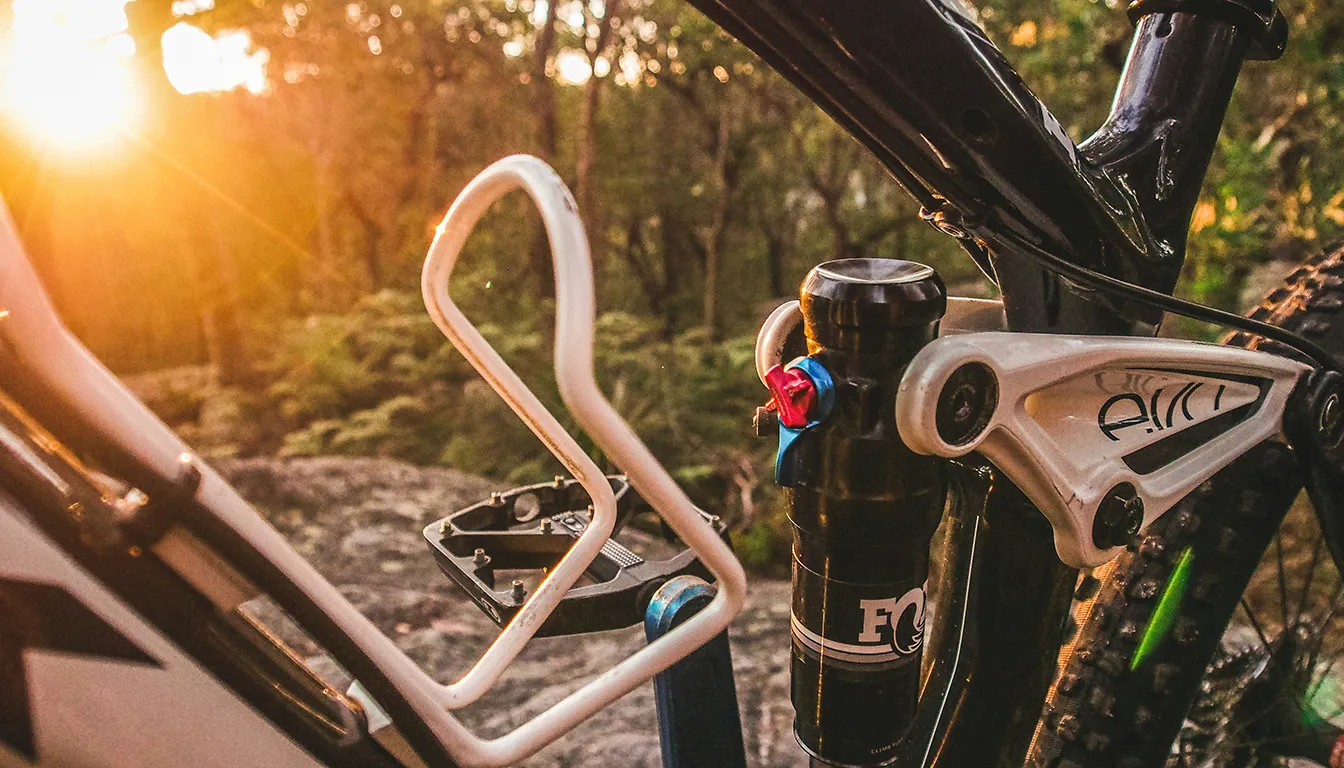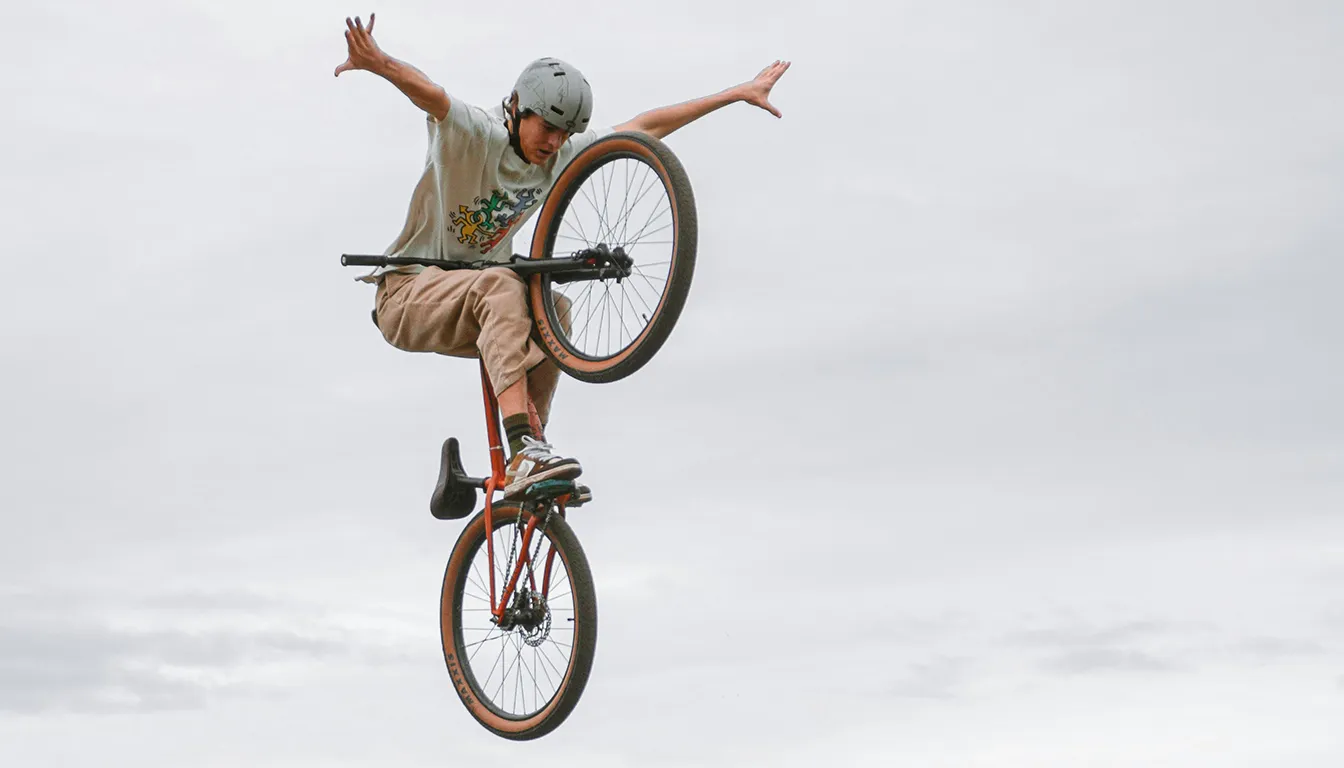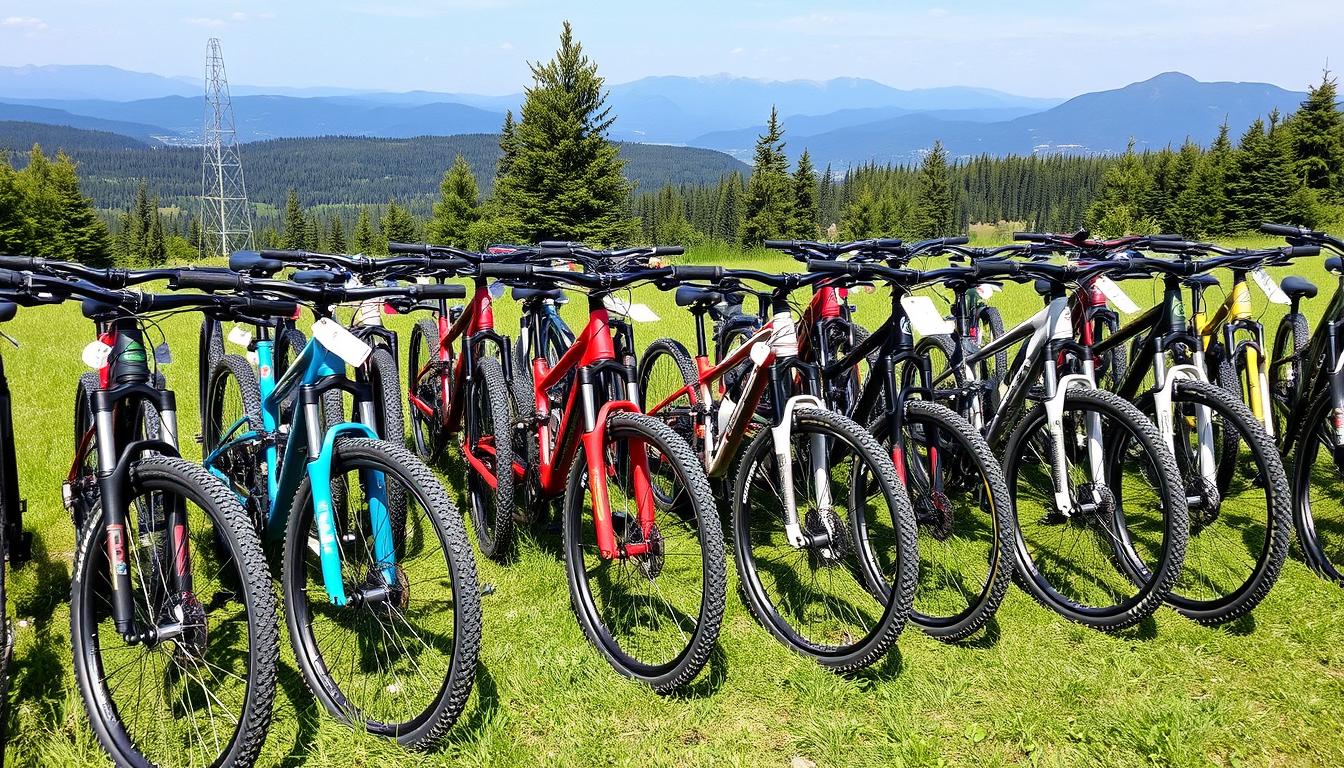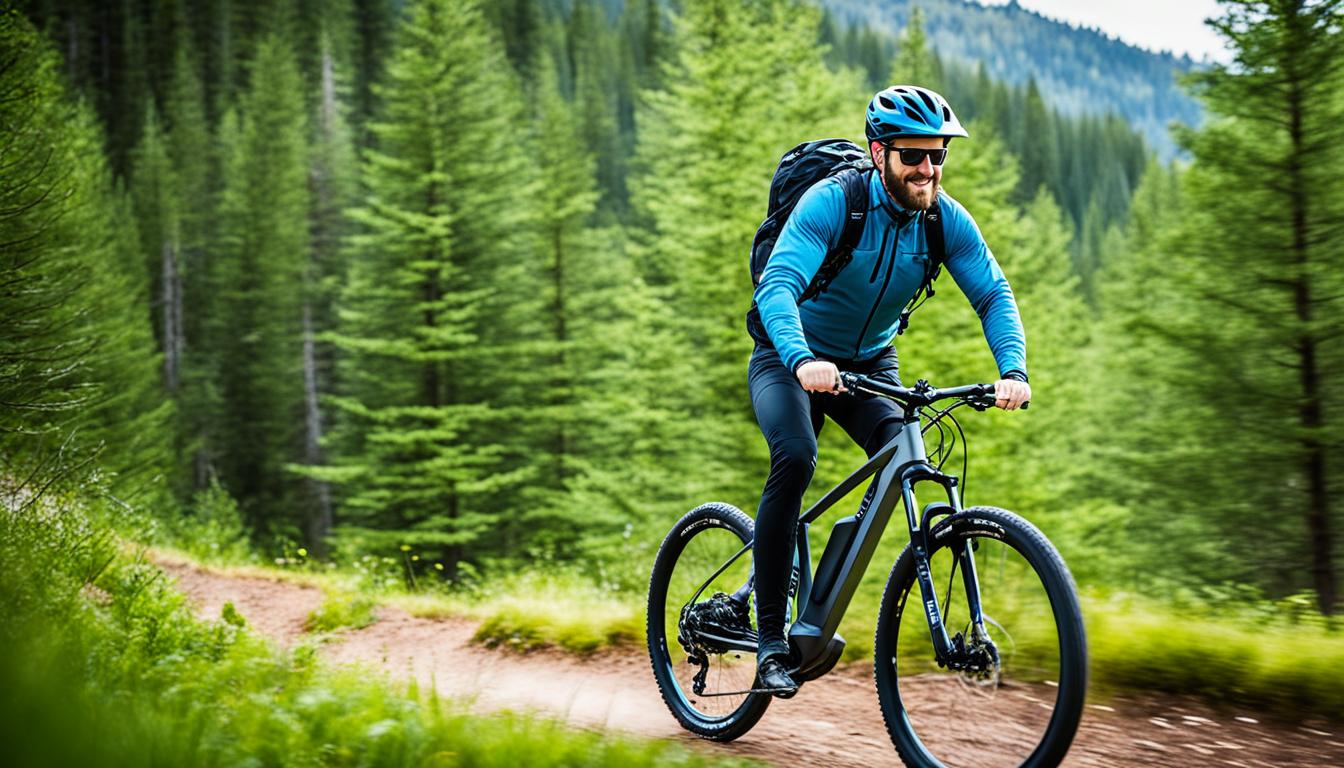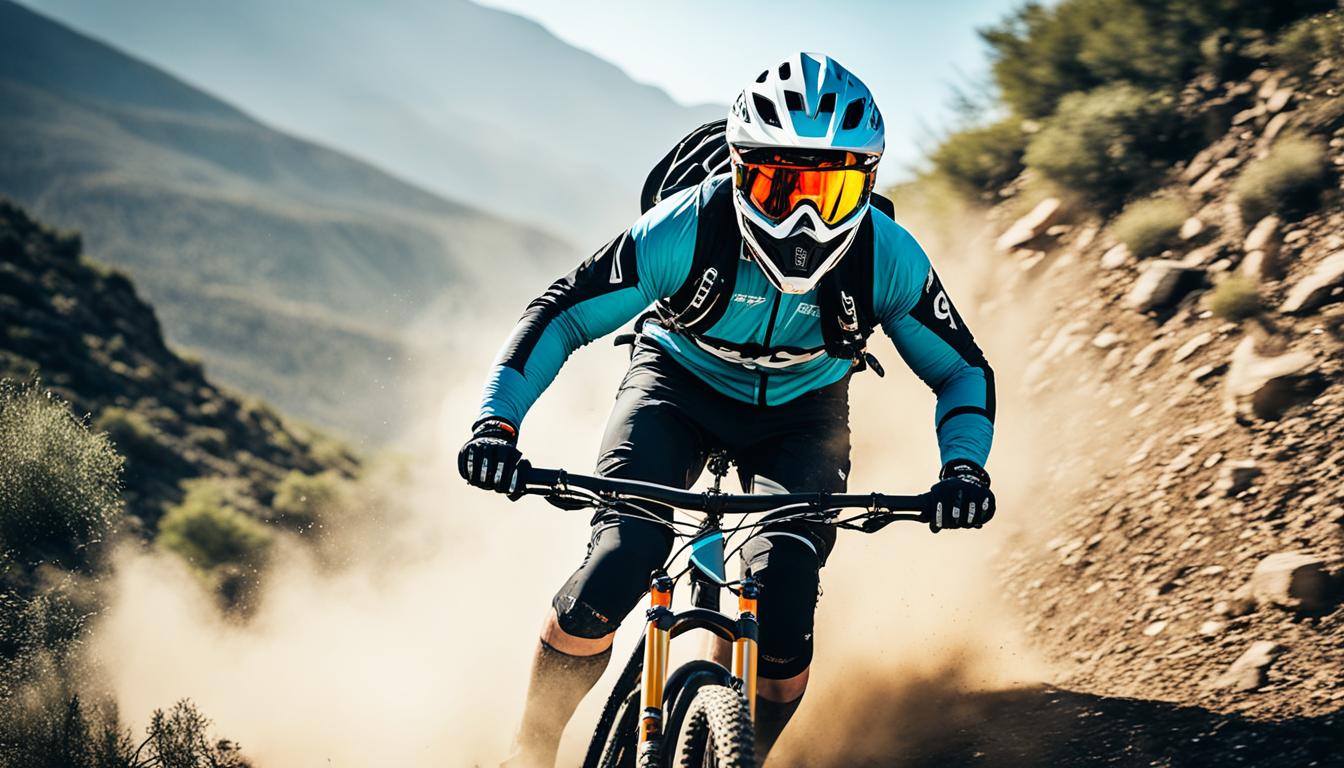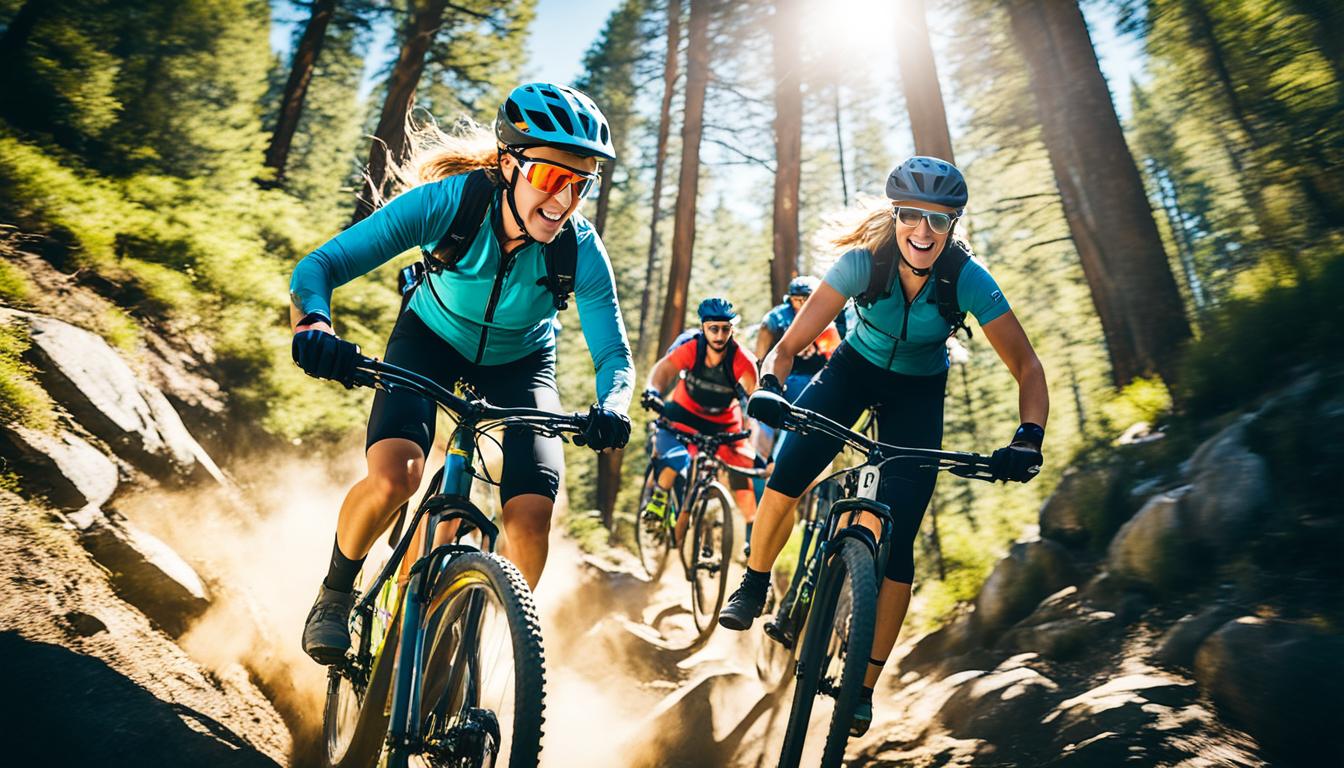Looking for the best enduro bike for tough technical trails is vital for mountain biking fans. These bikes shine on both steep inclines and harsh descents. They suit the rough UK trails well. Today’s market offers bikes that mix performance, strength, and comfort well. High-quality enduro bikes average at £4,091.33, a worthy investment for better riding experiences.
We will look into what makes the top enduro bikes stand out, including rear suspension travel from 160mm to 180mm. Also, carbon fibre frames are becoming more popular. When searching for your ideal bike, think about how it matches your riding style and the various terrains you’ll face.
Understanding Enduro Bikes and Their Key Features
Enduro bikes have quickly become favorites among mountain biking fans. These are made for rough terrains, helping riders easily go up and down hills. They mix enduro bike features like durability, suspension, and control, setting them apart from regular mountain bikes.
What Makes Enduro Bikes Different?
Enduro bikes stand out due to their technical terrain specs. They balance agility with strength better than trail bikes. This comes from their design, wider handlebars, and strong frames that handle shocks well when going downhill. Thus, they offer better stability and control on challenging paths.
Essential Specifications for Technical Terrain
Enduro bikes shine with specific features. They usually have a suspension travel between 160mm to 180mm. This helps with cushioning on bumpy rides. Also, wheel size is crucial; many have 29-inch wheels or a mix of a 29-inch front and 27.5-inch rear wheel. This helps with performance on tough terrains.
Importance of Suspension Travel and Wheel Size
The right suspension travel helps in overcoming obstacles and rough spots smoothly. It lets the bike soak up bumps from rocks and roots. Moreover, larger wheel sizes offer better grip and balance, key for control on tricky trails. These features let riders concentrate on their adventure, not bike handling.
Understanding your gear and bike features makes biking adventures better. For tips on your next biking journey, see this mountain biking trails guide.
Top Contenders for the Best Enduro Bike for Technical Terrain
When looking for top enduro bikes suited for technical terrains, certain models stand out. They combine performance, agility, and durability. These qualities make them perfect for difficult trails.
The Norco Shore 2: A Balance of Climbing and Descending
The Norco Shore 2 is known for its strong 180mm rear travel and modern shape. It climbs steep hills well and is stable on fast downhills. Riders feel confident on various terrains, thanks to its sturdy build.
Canyon Strive CFR: Race-Bred Performance
The Canyon Strive CFR is aimed at competitive riders. It has a Shapeshifter system for adjusting its shape for different terrains. With 170mm travel and 29-inch wheels, it’s great for both climbs and technical descents.
Merida One-Sixty: Enduro Mountain Bike of the Year
The Merida One-Sixty is famous for its innovative design, winning Enduro Mountain Bike of the Year. It’s fun to ride on many trails, thanks to its lively shape and solid build. A 180mm fork and top components make it smooth to ride up or down.
Nukeproof Mega 297 Carbon Elite: Versatile and Fun
The Nukeproof Mega 297 Carbon Elite offers a comfortable and confident ride. Its suspension and geometry work well on varied trails. This bike is fun but ready for tough technical rides.
What to Look for in Your Ideal Enduro Bike
When picking your enduro bike, consider features that suit your riding style and the terrain’s challenges. Look at the bike’s geometry, suspension, and parts’ quality. These factors boost your comfort and how well you ride.
Geometry and Fit: Ensuring Comfort and Control
The right fit for your enduro bike is key for top performance. The bike’s reach, head angle, and chainstay length impact how it handles and feels. Reach numbers usually fall between 440mm and 475mm. Head angles around 64 to 65 degrees keep the bike stable at speed.
Desiring a longer reach and slack angles helps with comfort on tough rides. It makes navigating rocky trails smoother. Riders who are 157cm to 185cm tall will find varied bike fit options beneficial.
Suspension Systems: Key for Technical Handling
A bike’s suspension system plays a big role in control on difficult terrain. Choosing between air and coil shocks depends on what the rider needs. A well-adjusted suspension helps deal with bumpy ground. It’s important to try out different models to see which one suits your style.
Fork sizes, like 36mm or 38mm, also influence how the bike handles on steep drops. Checking out bikes from brands like Santa Cruz and Specialized can help you find the right suspension.
Components: Importance of Quality Parts
It’s critical to invest in good bike components for better performance and reliability. Top-notch drivetrains and solid brakes make a big difference. Brake rotors normally range from 200mm to 220mm. Tyre inserts also offer extra protection on tough rides.
Opting for bikes with reliable parts from well-known brands ensures they last longer and work well. This lets you enjoy the trail more.
To find the ideal enduro bike, think about these key elements. For more advice, you can look into detailed guides made for riders exploring this exciting area of mountain biking.
An Expert Buyer’s Guide to Choose the Best Enduro Bike
Choosing the right enduro bike means looking at what suits you and where you ride. Our guide makes it easy to decide by highlighting key things to think about.
Evaluating Your Riding Style and Terrain
Your riding style really matters when picking a bike. Think about where you usually ride. Some enjoy tough downhill paths, while others prefer a mix of uphill and downhill. Knowing what you like helps pick a bike with the right features for you.
Assessing Price vs. Performance
Set a budget that matches what you want in performance. Trail bikes have different travel distances, fitting varied styles. High-end bikes have top tech and are lighter. Decide if these extras fit your style or if a less expensive bike meets your needs.
Finding the Right Balance Between Downhill Capability and Climbing Efficiency
Good enduro bikes are great at both downhill and climbing. Models with up to 180mm of front travel and 150-175mm rear travel are fun for downhill. But, they might not be the best climbers. Look for a bike that handles all sorts of terrain well. This way, you’ll enjoy every ride.
Conclusion
Choosing the right enduro bike for rough trails means knowing your riding style well. The market today offers plenty of options, including high-tech models for great performance and comfort. Look at both traditional and electric choices, such as the Yeti SB160E, and check their features to see if they match the UK’s tough trails.
Remember to think about important enduro biking tips like frame size, geometry, and suspension. Strong parts and new designs can make your rides better and help you face hard paths confidently. If you want a bike that’s both light and strong, look at the Last Tarvo. It shows what good bikes for rugged terrain are like. You can learn more about it here.
Finding the perfect bike is about mixing performance and comfort for the trails you ride. Your enduro bike will be a key part of your adventures and a reliable friend in tough spots. This choice will surely make your biking much more fun.
FAQ
What are the key characteristics of the best enduro bikes?
The top enduro bikes have longer suspension travel, from 160mm to 180mm. They also come with high-quality parts. Their design helps with both climbing and going down on tricky paths.
How can I choose the right enduro bike for my riding style?
Think about the trails you ride on. Do you like hard climbs or fast downhills? Knowing this will guide you to choose the right bike features. Look for specific suspension systems and bike shapes.
What is the advantage of having larger wheel sizes on an enduro bike?
Bigger wheels, like 29 inches, make it easier to get over rough spots. This means a smoother ride on tough trails.
Why is suspension travel so important for enduro biking?
Good suspension travel helps take the shock from rough spots like rocks and steep drops. It gives you more control and stability when you’re riding.
Can you explain the differences between air and coil suspension systems?
Air suspension is lighter and can be adjusted for different rides. Coil suspension gives a smoother feel. It’s great for very bumpy sections.
Which enduro bike is best for competitive riding?
The Canyon Strive CFR is great for racers. It’s made for high performance. It also has a system to change its shape for various trails.
What should I consider regarding budget when selecting an enduro bike?
Match your budget with the bike features you need. High-end bikes have fancy technology. But make sure these extras fit with how you plan to ride.
How does bike geometry affect my riding experience?
The shape of an enduro bike changes how it feels to ride. A long reach and flat head angles make it stable during fast downhills. This makes riding more fun.
What are some top-rated enduro bikes currently available?
Top bikes include the Norco Shore 2 for a balanced ride. The Merida One-Sixty is playful and has won awards. The Nukeproof Mega 297 Carbon Elite is strong and comfortable.
